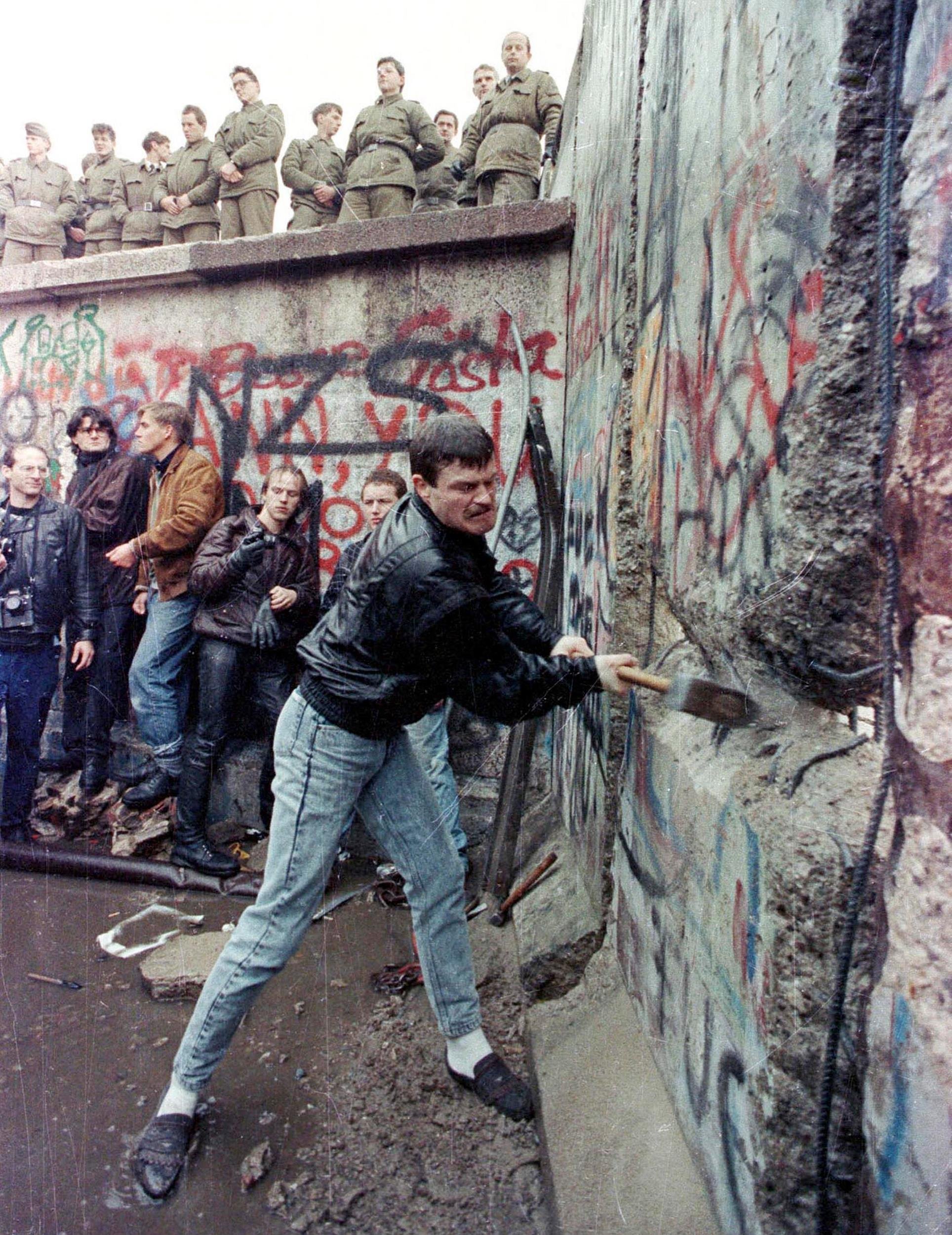The Fall of the Berlin Wall
via Getty Images
By AJ Birt, 3rd Year History
On November 9th 1989, the Berlin Wall started its collapse. Berliners were allowed free movement between East and West Berlin after twenty years of segregation. It was the beginning of the end of Communism in Eastern Europe.
The Berlin Wall’s imposition in 1961 was to prevent a “brain drain” in Berlin, to keep some intellectuals in the Soviet-occupied sector to keep people entirely dominated by Soviet ideology and free from “Western fascism”. It only succeeded in tearing a country apart. Families were separated, the chance of a better, Western life was entirely restricted if you lived in the East, and the Wall came to symbolise a literal ‘Iron Curtain’ across Germany.
I spoke to two Germans who were in their mid-twenties at the time of the Wall falling to find out the effect it had on their lives.
Sigrid Trier was born in West Germany, but most of her family were born in East Germany. Her parents emigrated illegally with her sister in 1951, leaving her cousins and grandparents in the East. For Sigrid, the Wall was more than a literal divide; it emphasised the cultural and social isolation across the halved country.
‘As a teenager, I felt I had more in common with the music I was listening to, the clothes I was wearing, where I was going on holiday, what I aspired for in life with teenagers from the US, the UK and France…than with my Eastern German cousins, my own family.’
The ‘cruel’ imposition of ‘a political experiment’ evidently still holds some bitterness for Sigrid, whose familial issues with the Wall are emblematic of the pain so many Germans experienced thanks to the Cold War.
“‘As a teenager, I felt I had more in common with the music I was listening to, the clothes I was wearing, where I was going on holiday, what I aspired for in life with teenagers from the US, the UK and France…than with my Eastern German cousins, my own family.’”
The Wall as yet another pawn in the Cold War was evident for German people at the time. Arnim Friess noted that ‘The wall was one thing - knowing about nuclear warheads each side pointing at each other was worse.’ Arnim, who grew up in West Germany, described the Wall as an ‘expression of East Germany as a communist prison’.
A ‘prison’ is an apt descriptor; the Wall was built up over time to include barbed wire, strips of ‘No Man’s Land’ filled with landmines, and a constant watch of armed guards. At least 140 people died trying to cross the Wall.
It is clear that the ideological significance of the Wall cannot be disregarded, whether you are remembering it as an individual in the twenty-first century or studying it as a historian. I asked Sigrid and Arnim how they thought the world should remember the Wall.
Sigrid impassioned that the Wall should be remembered as a symbol for political repression, as something we can draw lessons from. Governments and populaces should regard fellow humans with kindness and permit freedom of movement and expression.
Arnim sees the Wall itself as ‘a relic of the Cold War’, but simultaneously a reminder ‘of lives lost, but also life carrying on.’ He provided some photos of how the Wall looks now; its location has become a site of memory and growth, with murals detailing the Cold War history of the Wall and trees lining what was previously No Man’s Land.
Sections of the Berlin Wall, on display at Bonn-Cologne Airport
The scars of the Berlin Wall are still visible in Berlin, but are fortunately no longer felt across the country, with the collapse of the USSR freeing most of eastern Europe from Soviet tyranny. A new generation has grown up without the Wall, and Berlin - as well as its people - has been allowed to heal.
Many thanks to Sigrid Trier and Arnim Friess for consenting to be questioned for the Bristorian.



